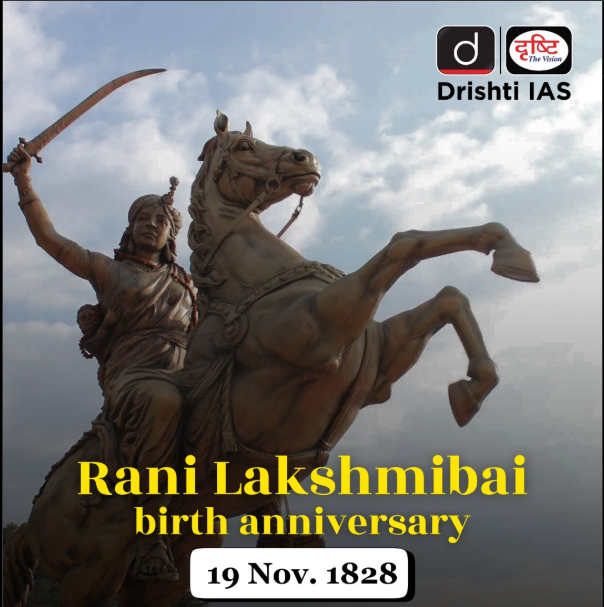Uttar Pradesh
Birth Anniversary of Rani Lakshmibai
- 20 Nov 2025
- 3 min read
Why in News?
The nation paid tribute to Rani Lakshmibai on her birth anniversary, honouring her role as one of the most iconic leaders of the 1857 revolt and a symbol of resistance against British rule.
Key Points
- Early Life:
- Rani Lakshmibai was born on 19th November 1828 in Varanasi, Uttar Pradesh, and was originally named Manikarnika.
- During her childhood, she received formal training in horse riding, fencing, and shooting, reflecting her early inclination toward physical strength and martial skills.
- She grew up alongside notable companions such as Nana Sahib and Tatya Tope, who later became prominent figures in the 1857 uprising.
- Manikarnika Becomes Rani of Jhansi:
- At the age of fourteen, Manikarnika married Maharaja Gangadhar Rao Newalkar of Jhansi and was thereafter known as Rani Lakshmibai.
- She gave birth to a son who died in infancy, after which the royal couple adopted a son, Damodar Rao, from the Maharaja’s extended family to succeed the throne.
- Role in the Struggle for Independence:
- After the death of Gangadhar Rao in 1853, the British Governor-General Lord Dalhousie refused to recognise the adopted heir and attempted to annex Jhansi under the Doctrine of Lapse.
- Rani Lakshmibai opposed this move and led a remarkable resistance against British forces, defending Jhansi with exceptional courage.
- She continued fighting even after leaving Jhansi and ultimately died on the battlefield on 17th June, 1858.
- Her legacy continued to inspire freedom movements, including the Rani of Jhansi Regiment, the first women’s unit of the Indian National Army formed in 1943.
Doctrine of Lapse
- The Doctrine of Lapse was an annexation policy implemented during the tenure of Lord Dalhousie (1848–1856).
- It stipulated that any princely state under British influence would be annexed if its ruler died without a natural male heir, and adopted sons would not be recognised as successors.
- Using this doctrine, Dalhousie annexed several states including Satara (1848), Jaitpur and Sambalpur (1849), Baghat (1850), Udaipur (1852), Jhansi (1853), and Nagpur (1854).








